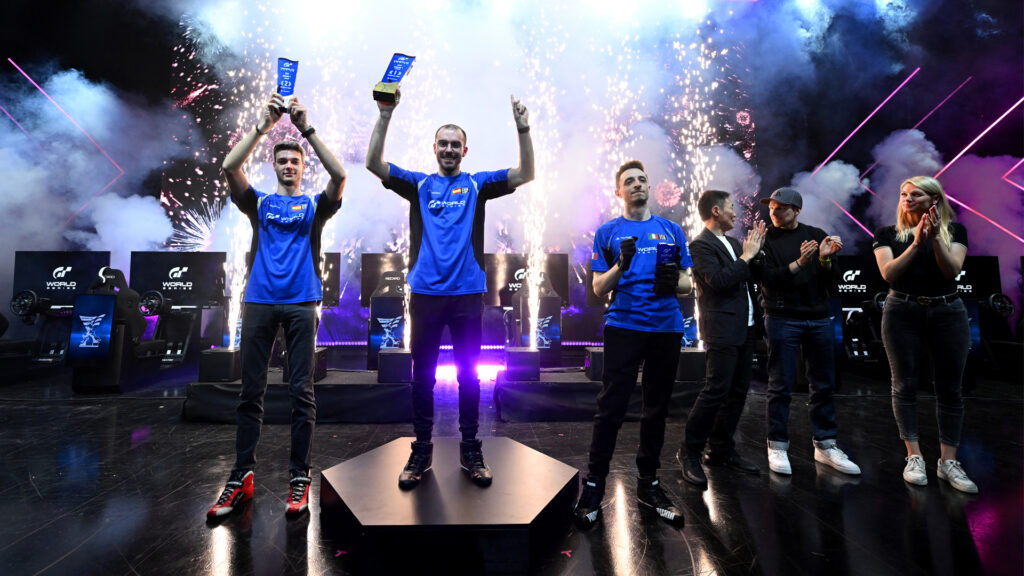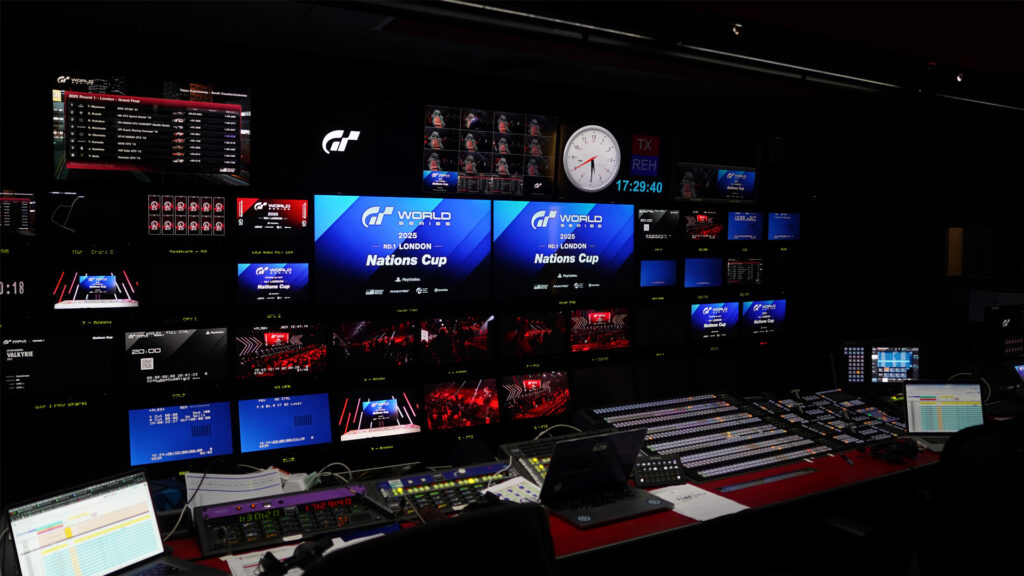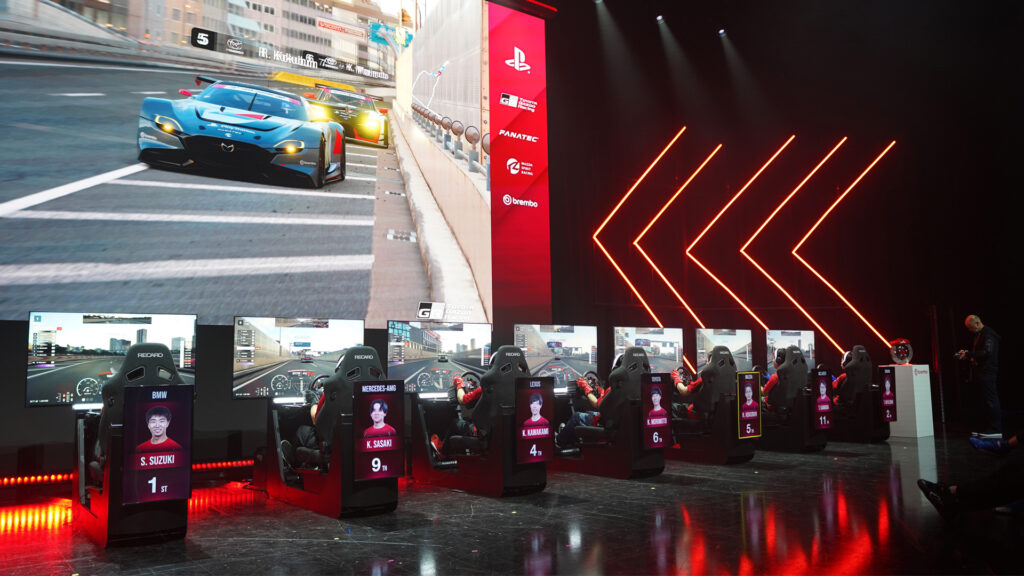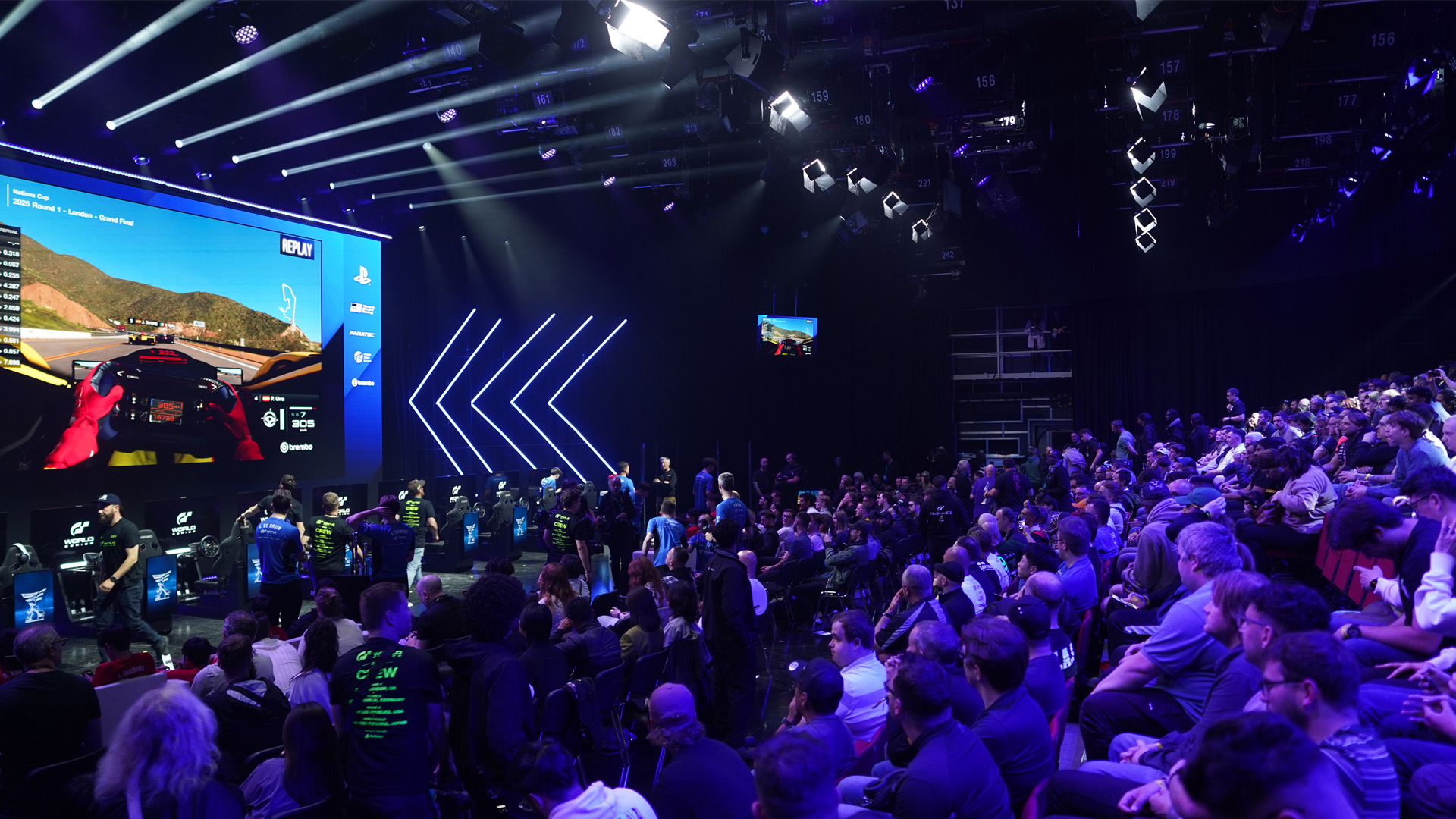This opinion piece was originally part of a prior Traxion email newsletter – sign up to receive these early, direct to your inbox, every week.
Rupert Williamson is showing me and a cohort of media representatives around the backstage area at the Gran Turismo World Series event in London.
At the back, Clive Rose from Getty Images uses a PlayStation 5 Pro to photograph the just-completed race inside the Gran Turismo 7 game. To his left are the four stewards, who work live during the broadcast. In front is a hive of activity, with more screens than a branch of Currys.
Hidden around a corner and behind a veil of black curtains are the English-language commentary team, Tom Brooks and Jimmy Broadbent.

But this is only one part of the show, as we’re led up a narrow staircase, up above the BBC Studioworks setting within Television Centre.
The affable industry veteran – who has previously worked for the likes of Yamaha in MotoGP and the GT Academy programme – has been a linchpin of the World Series for the last seven years. A globetrotting circus that delivers in-person events, broadcast live to the world in eight languages (including for the first time in Mandarin), which is beyond reproach when it comes to virtual racing.
After a lengthy in-game qualification process, open to all with a copy of Gran Turismo 7, the world’s quickest drivers are invited to four events. This year, there are London, Berlin, and Los Angeles, before the World Finals in Fukuoka, Japan, in December.
As Williamson opens the door to another production room, we are confronted by another wall of screens, but this time, joined by a phalanx of important-looking levers that wouldn’t be amiss in that Mission: Impossible – The Final Reckoning plane scene.

This command centre usually controls overtly genial celebrities on The Graham Norton or The Jonathan Ross shows.
Producer, Will from Boombox, presides over seven cameras and 12 POVs, and presumably, all the convoluted buttons. Then we’re escorted to another room, where a team of people diligently organises, edits and uploads content to social media.
The last time I saw a production on this scale for a racing video game was Le Mans Virtual, and as impressive as that was, the Gran Turismo production levels are even more impressive. No one in this industry is pushing the boundaries further than Gran Turismo.
Some professional sim racing esports teams aren’t huge fans of this championship – there’s no prize money and their sponsors can’t be represented on the car liveries.
But I think that’s missing the point. The Gran Turismo World Series exists as a showcase, on Sony’s dime. To take a form of sim racing to places it has never been before. To find a new audience.

There was a sold-out crowd in London, actively cheering and jeering as people made overtakes, or span out. Find another contemporary sim racing event with such a raucous atmosphere. I’m willing to say you cannot.
At a time when viewing numbers for other competitions look to be declining post-COVID, and rumours persist about high-profile competitions on the edge of collapse, we should embrace the World Series and all its pomp.
This opinion piece was originally part of a prior Traxion email newsletter – sign up to receive these early, direct to your inbox, every week.





Chat with the Community
Sign Up To CommentIt's completely Free